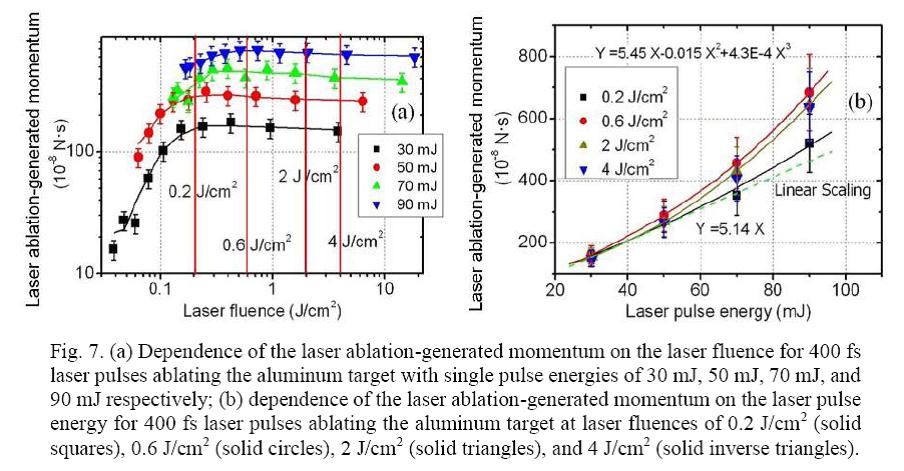The knowledge of the ablation-generated momentum has great application potentials in the forthcoming technologies, such as laser induced inertial confinement fusion and ablative laser propulsion. The magnitude of this momentum also contains useful information about the laser ablation process and its underlying mechanisms. Unfortunately, only few measurements of ultrashort laser ablation-generated momentum have been reported, and furthermore most of them are for the investigation of ablative laser propulsion not for the study of the mechanisms of ultrashort laser ablation.
Researchers at Nankai University and Shanghai Institute of Optics and Fines Mechanics (SIOM/China) investigated the momentum induced in the ablation of solid targets by 50 fs - 12 ps laser pulses.[ OPTICS EXPRESS. Vol. 19, No. 9 ;2011, 8871]
The dependence of the momentum coupling coefficient on the laser fluence is investigated using the torsion pendulum and the optimal laser fluence is obtained for femtosecond laser ablation of aluminum, copper, and iron targets. Time-resolved shadowgraphs of laser ablation of the copper target indicate that the ablation process generates the maximal momentum is dominated by the photomechanical mechanism. It in turn demonstrates that the photomechanical mechanism is a highly efficient way to remove the target material, which is in agreement with the description in Ref.
As the laser pulse duration increases from 50 fs to 12 ps, the momentum coupling coefficient first increases rapidly and then remains nearly constant when laser pulses with specific laser fluence are used. The characteristic pulse width that divides the above two regimes is about 1 - 2 ps, only varying slightly for different target materials. The change of the ablation mechanism from atomization to phase explosion with the increase of the laser pulse width is responsible for such an observation.
It is also found that under the same experimental conditions the ablation-generated momentum increases nonlinearly as the increase of the laser pulse energy and the laser spot area on the target. Such a nonlinear momentum-energy conversion scaling law demonstrates that even for femtosecond laser pulses, the dissipation of the energy into the surrounding area of the ablation site is still significant and laser pulses with larger pulse energy and spot area while keeping the laser fluence unchanged can lead to higher energy utilization efficiency.


